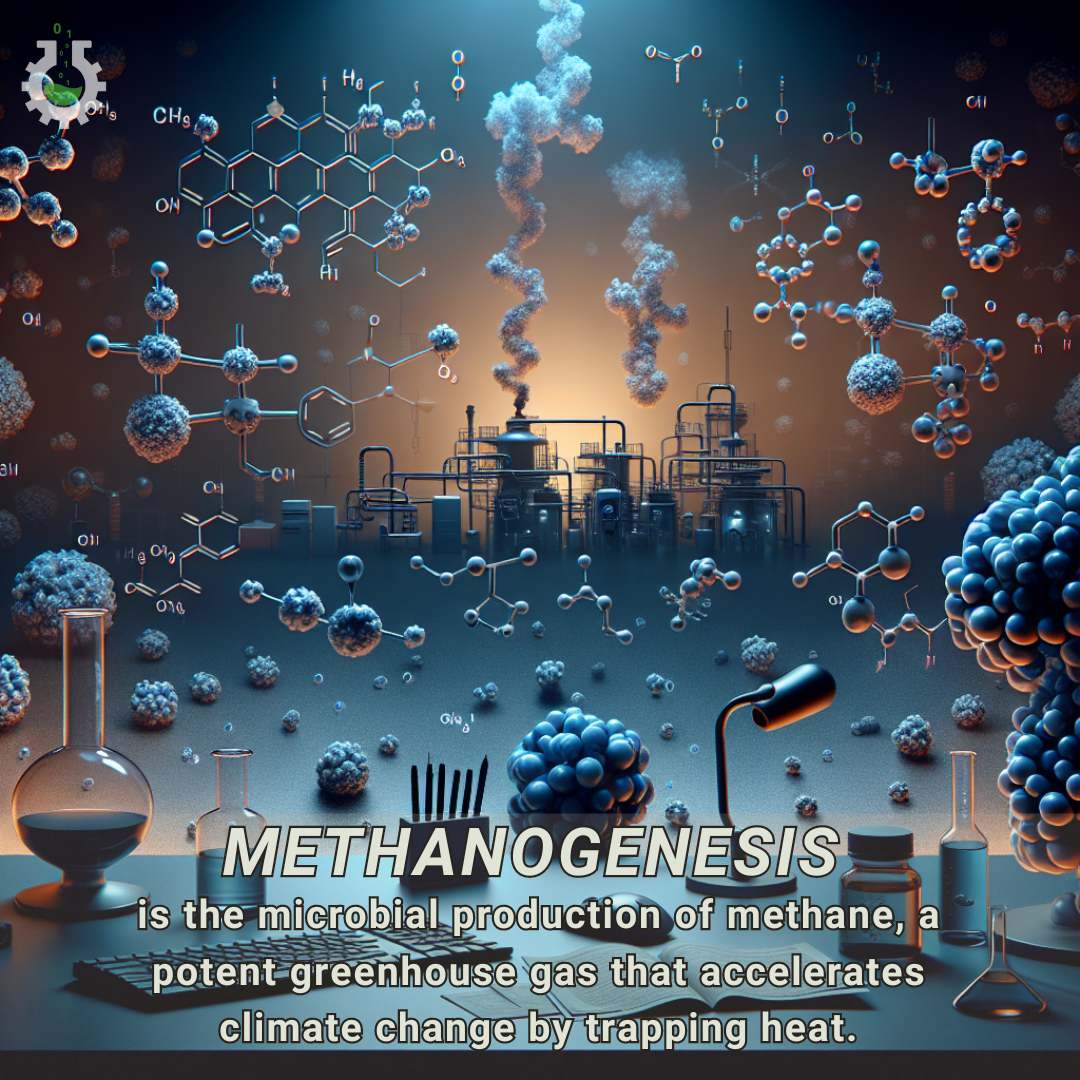October 1, 2024
Climate Change Poster Collection of the Week – Methanogenesis
Book a Demo
This week’s Climate Change Poster Collection highlights Methanogenesis, the biological process by which certain microorganisms, known as methanogens, produce methane as a metabolic byproduct in anaerobic conditions. This process is a key component of the global carbon cycle and has profound implications for climate change. Methanogens are a type of archaea, a distinct domain of life separate from bacteria and eukaryotes, and they thrive in environments devoid of oxygen, such as wetlands, rice paddies, landfills, and the digestive tracts of ruminants. Their activity is particularly notable in permafrost regions, where vast amounts of organic material have been locked away for millennia. As global temperatures rise due to climate change, permafrost is beginning to thaw, exposing this organic material to microbial decomposition. When methanogens break down this organic matter, they produce methane—a greenhouse gas that is approximately 25 times more effective at trapping heat in the atmosphere than carbon dioxide over a 100-year period.
The implications of methanogenesis for climate change are multifaceted and deeply concerning. The release of methane from thawing permafrost creates a feedback loop: as more permafrost thaws, more methane is released, further accelerating global warming and leading to even more permafrost thaw. This positive feedback mechanism is a significant concern for climate scientists because it has the potential to rapidly amplify the effects of climate change. Unlike carbon dioxide, which can be absorbed by oceans and forests, methane persists in the atmosphere for a shorter period but has a much more potent warming effect during its lifespan. This makes the regulation of methane emissions a critical component of climate mitigation strategies.
Moreover, methanogenesis in wetlands and rice paddies also contributes to atmospheric methane levels. Wetlands are the largest natural source of methane, and they play a dual role in the carbon cycle. On one hand, they act as carbon sinks, sequestering carbon dioxide through plant growth. On the other hand, the anaerobic conditions in waterlogged soils are ideal for methanogens, making wetlands significant methane emitters. Similarly, rice paddies, which are essentially artificial wetlands, are a major source of methane due to the anaerobic decomposition of organic material in flooded fields. Human activities such as agriculture and waste management further exacerbate this issue. Livestock farming, particularly ruminants like cows and sheep, contributes significantly to methane emissions through enteric fermentation—a digestive process in which methanogens in the stomachs of these animals break down food and produce methane as a byproduct.
Understanding methanogenesis is therefore crucial for developing accurate climate models and effective mitigation strategies. Research into this process can help identify ways to manage methane emissions, such as through changes in agricultural practices, waste management improvements, and even potential interventions in permafrost regions. For instance, altering livestock diets to reduce enteric fermentation, improving manure management practices, and adopting rice cultivation techniques that minimize waterlogged conditions can all contribute to reducing methane emissions. In landfill management, capturing methane for use as a renewable energy source can both reduce greenhouse gas emissions and provide a sustainable energy solution.
Furthermore, studying the microbial ecology of methanogens can lead to innovative approaches to mitigate methane emissions. For example, understanding the environmental conditions that favor methanogenesis can inform strategies to disrupt these conditions and reduce methane production. Biotechnological advances could also enable the development of microbial treatments that inhibit methanogens or promote the activity of microbes that consume methane, known as methanotrophs.
The role of methanogenesis in climate change underscores the importance of addressing the interconnectedness of natural processes and human activities. By shedding light on the intricate connections between microbial processes and climate dynamics, we can better address the multifaceted challenges posed by global warming and work towards a more sustainable future. This holistic understanding is essential for crafting policies and practices that not only mitigate climate change but also promote resilience and adaptation in the face of its inevitable impacts. In conclusion, methanogenesis is a critical but often overlooked aspect of the climate change puzzle, and addressing it requires a concerted effort that spans scientific research, technological innovation, and policy development.
Discover an inspiring collection of climate change poster.



